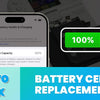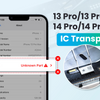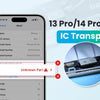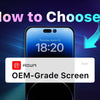iPhone Screen Replacement: OEM Refurb vs. OEM Reassembled vs. REPART’s 120Hz Soft OLED
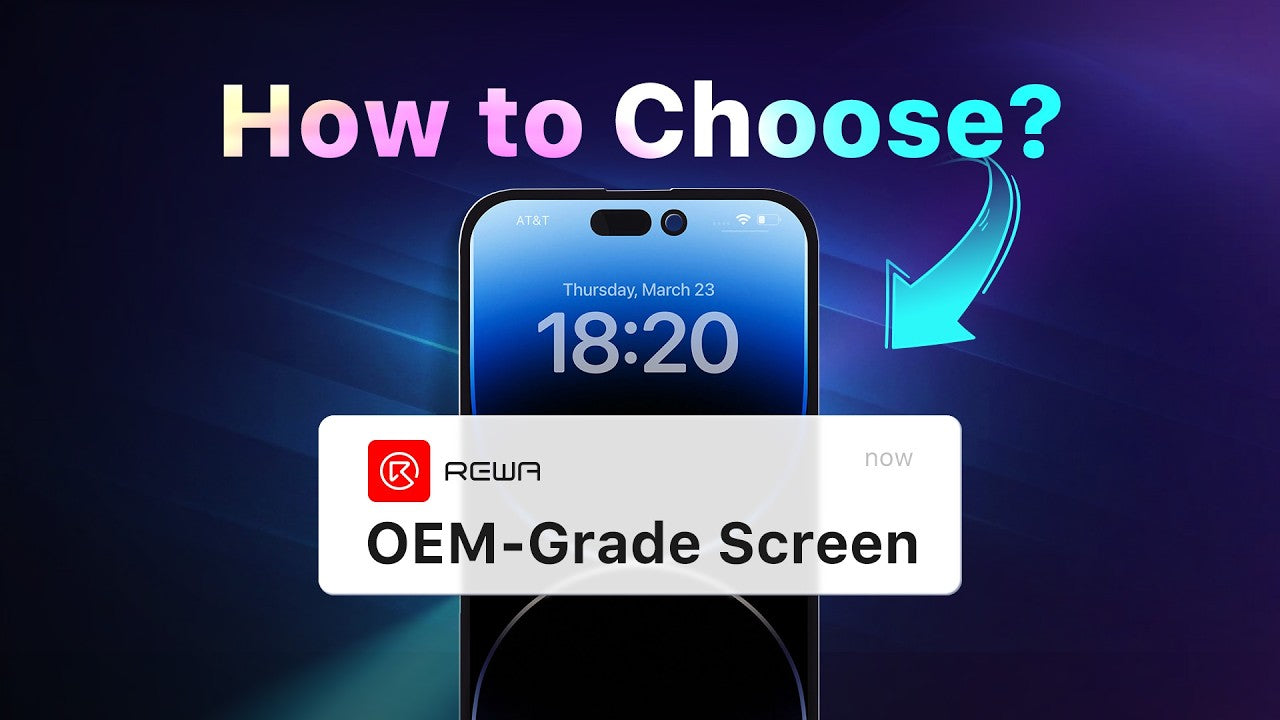
Cracked iPhone screens are a common issue, but selecting the right replacement screen is crucial for maintaining your repair shop or refurbishment business's profitability. For iPhone 12 and newer models, near-OEM quality screens are the benchmark, offering better resale value, fewer returns, and a seamless user experience. Whether you’re a refurbisher, repair technician, or DIY enthusiast, choosing the ideal screen is key. This guide compares three top-tier options: OEM Refurb, OEM Reassembled, and REPART’s 120Hz Soft OLED. We'll cover brightness, touch performance, and compatibility with iOS 18’s Repair Assistant to help you make the right choice for your iPhone screen replacement needs.
What Are the Screen Options?
Before we compare, let’s clarify the three screen types for iPhone screen repair beginners:
- OEM Refurb Screen: An original iPhone screen (OLED panel and flex cable) sourced from a used or damaged device, with the cracked front glass replaced. It’s as close to Apple’s original as you can get without buying directly from Apple.
- OEM Reassembled Screen: Features an OEM display panel and flex cable but is reassembled by a third-party factory, potentially introducing minor quality variations.
- Aftermarket Soft OLED (REPART 120Hz): A fully third-party manufactured screen designed to mimic OEM performance. REPART’s version includes a tag-on flex cable for transferring the original touch IC (integrated circuit), reducing "Unknown Part" warnings. Soft OLEDs are more flexible and durable than Hard OLEDs, which use rigid glass substrates.

These terms are crucial for repair shops and refurb Rise software (used by 70% of repair shops in 2024) highlights the growing preference for near-OEM screens among refurbishers.
Step-by-Step Comparison: Which Screen Is Best for iPhone Screen Replacement?
Let’s break down how these screens stack up across key metrics critical for refurbishing businesses and repair technicians.

1. Physical Design
- OEM Refurb: Boasting the thinnest chin (the bottom bezel) and slimmest profile, closely matching Apple’s original design. This sleek look enhances its resale appeal.
- OEM Reassembled: Nearly matches OEM Refurb’s chin size but is slightly thicker due to third-party assembly tolerances.
- REPART 120Hz Soft OLED: Slightly thicker with a marginally larger chin, but still visually comparable to OEM. Its flexible substrate accommodates the iPhone’s curved display better than Hard OLEDs, avoiding oversized bezels.

Why It Matters: A slimmer chin and thinner profile improve aesthetics, a key selling point for pre-owned iPhones, as 65% of buyers prioritize device appearance.
2. Visual Performance
When the screen lights up, users see:

Brightness:
- OEM Refurb: 1012 nits (bright and vibrant).
- OEM Reassembled: 1107 nits (slightly brighter but with potential drawbacks).
- REPART 120Hz Soft OLED: 916 nits (slightly dimmer but still excellent in most lighting conditions).
Color Accuracy:
- OEM Refurb and OEM Reassembled: True-to-original color tones and saturation, ideal for color-critical users.
- REPART 120Hz Soft OLED: Higher color gamut for more vibrant, saturated colors, appealing to users who prefer vivid visuals.

Mura Effect: OEM Reassembled screens may show Mura (cloudy patches) due to third-party assembly, while OEM Refurb and REPART’s Soft OLED are free of this issue.
Why It Matters: Brightness and color accuracy impact user satisfaction. REPART’s vibrant display caters to young demographics (18–34), who prefer bold visuals (Pew Research, 2024).
3. Touch Performance

- OEM Refurb and OEM Reassembled: Smooth and precise touch response, with no lag when dragging icons or drawing lines.
- REPART 120Hz Soft OLED: Near-OEM touch performance, with a slight lag when dragging icons, which was barely noticeable in daily use. Its 120Hz refresh rate ensures buttery-smooth scrolling, a premium feature for refurbished devices.
Why It Matters: Precise touch response reduces user complaints, and a 120Hz display adds a competitive edge, as 80% of premium phone buyers value high refresh rates.
4. iOS 18 Repair Assistant Compatibility
- OEM Refurb: The only screen that passes iOS 18’s Repair Assistant, avoiding "Unknown Parts" warnings without additional tweaks.
- OEM Reassembled: Requires touch IC transfer to bypass warnings, adding labor time.
- REPART 120Hz Soft OLED: Currently requires IC transfer, but REPART is developing a Soft OLED that will pass iOS 18 Repair Assistant natively, streamlining refurbishment.
Why It Matters: iOS 18’s stricter parts authentication (introduced in 2024) increased demand for compatible screens. Native compatibility reduces repair time by 15–20 minutes per device.
Which Screen Should You Choose?
- For Maximum Resale Value: Choose OEM Refurb for its slim design, iOS 18 compatibility, and authentic look, ideal for high-end refurbishers targeting premium buyers.
- For Balanced Cost and Quality: REPART’s 120Hz Soft OLED offers near-OEM performance at a lower cost, with a premium 120Hz display that boosts appeal. Its upcoming iOS 18 compatibility makes it a future-proof choice.
- For Budget-Conscious Refurbishers: OEM Reassembled provides OEM-grade visuals but risks Mura effects and requires extra labor for IC transfer.
Pro Tip: Pair your screen choice with a quality control checklist (e.g., test brightness, touch response, and True Tone functionality) to minimize returns, which cost refurbishers $50–$100 per device (Shopify, 2025).

Conclusion
Choosing the right iPhone screen replacement can significantly impact refurbishing businesses, repair shops, and DIY enthusiasts. OEM Refurb stands out for its authenticity and seamless iOS 18 compatibility, while REPART’s 120Hz Soft OLED combines vibrant visuals and future-ready features at a competitive price. OEM Reassembled offers a balance but requires extra labor and carries assembly risks. By aligning your choice with your budget, target audience, and repair expertise, you can enhance resale value and customer satisfaction. For a premium yet cost-effective solution, REPART’s 120Hz Soft OLED is a standout choice, with iOS 18 compatibility on the horizon. Elevate your repairs and set the stage for success—one screen at a time!
-
Posted in
aftermarket, aftermarket parts, aftermarket screen

